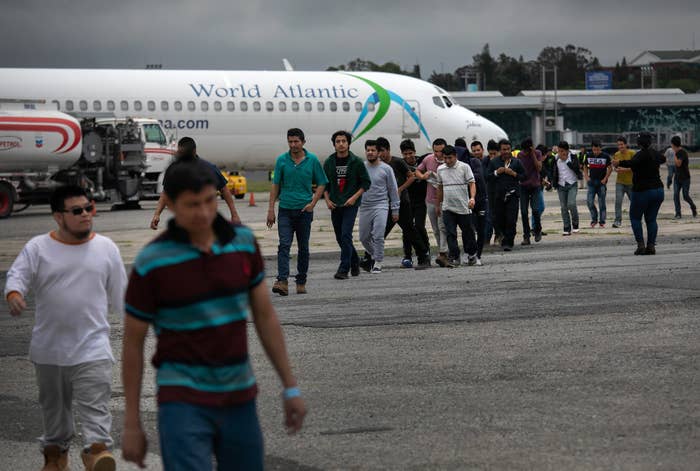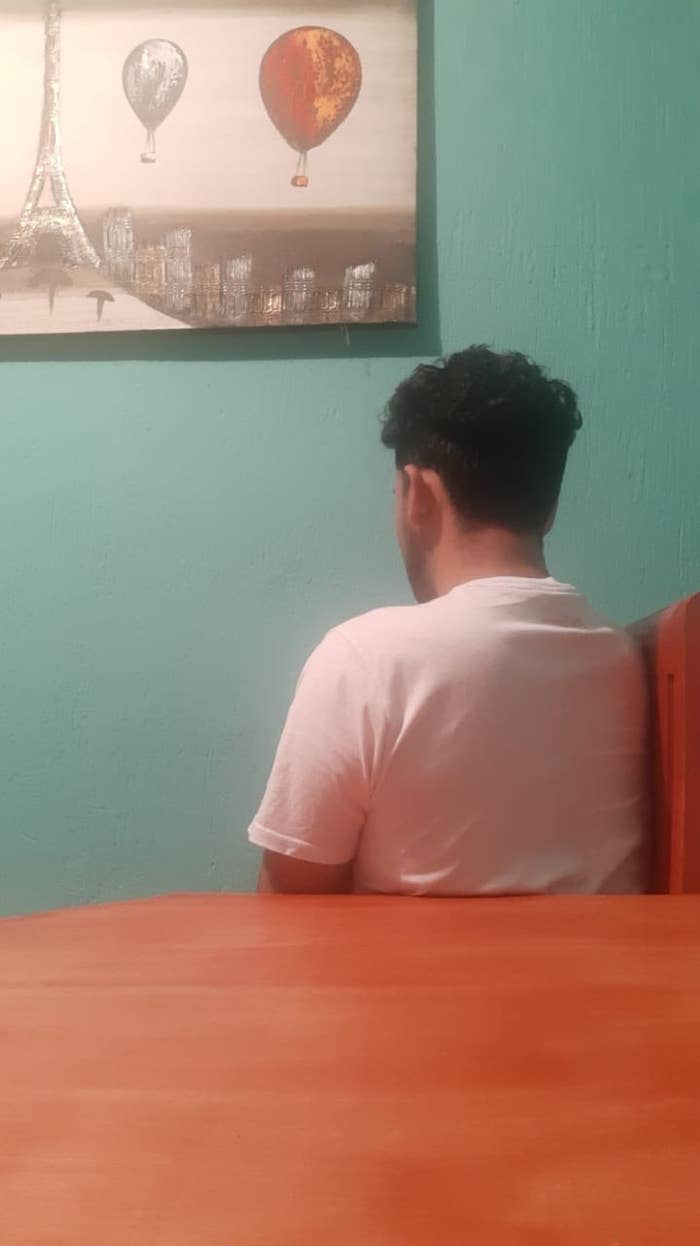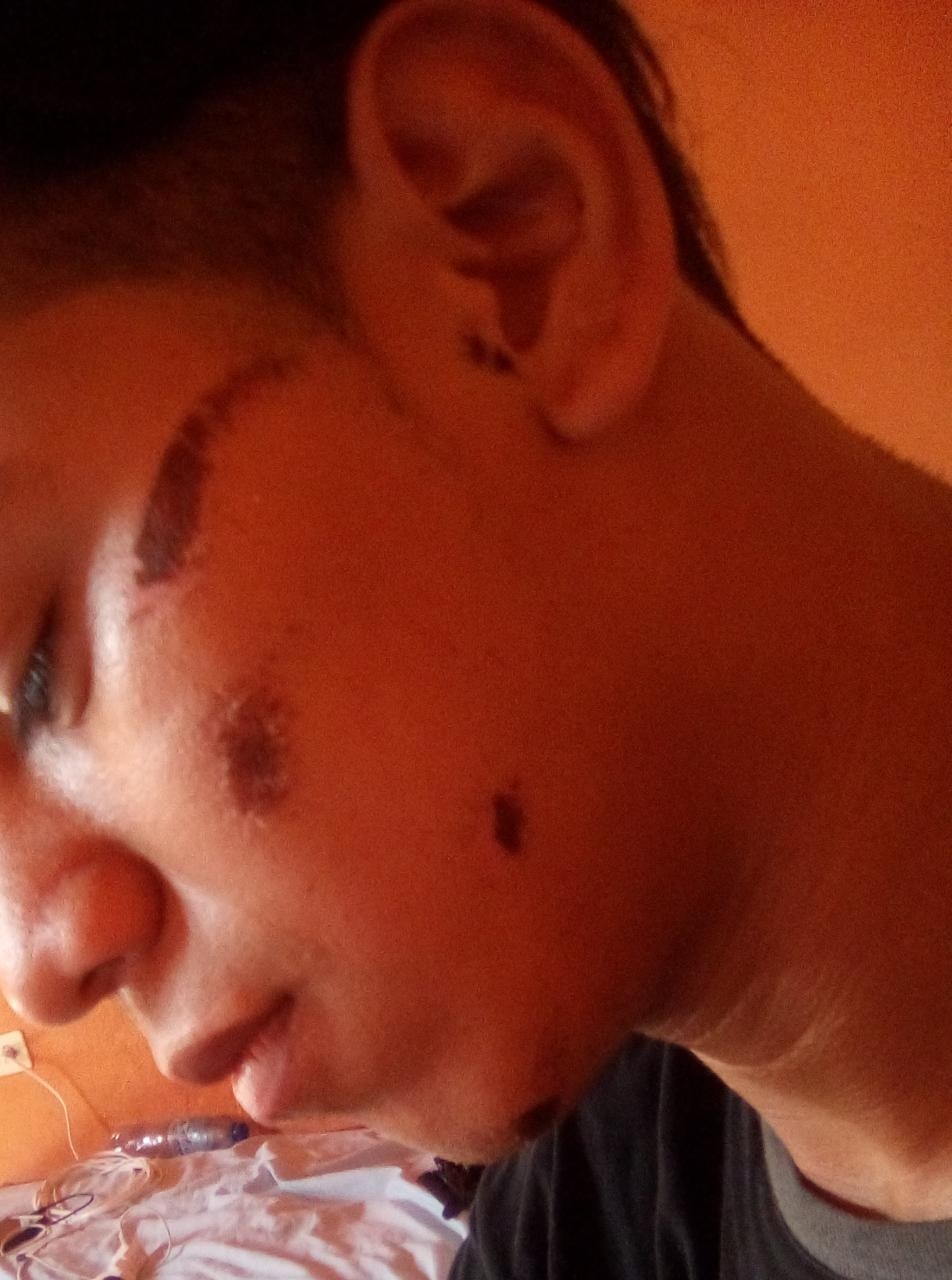
Sitting in a jet streaming toward Guatemala, watching the landscape shift below, Pablo replayed the scenes that had led to this moment. He recalled the day he fled his home in El Salvador rather than face the danger he felt being a gay man. He considered the sacrifices he had made over the yearlong journey to the United States–Mexico border.
Pablo, 23, had hoped to find safety and start a new life in the US. What he did not know when he was arrested after crossing the border into Texas in December was that he had placed himself on the front lines of an unprecedented effort by the Trump administration to dissuade immigrants from El Salvador and Honduras from seeking asylum in the US.
The immigrants were told they could no longer gain protection in the US. They would have to settle in Guatemala, a country also racked by poverty, violence, and instability, whose own citizens made up a sizable portion of those arrested at the southern border last year.
Pablo, who requested to use a pseudonym for fear of threats, was quickly thrust into the Trump administration’s new “safe third country” program. Border officials selected him, gave him a form that said he was eligible for a policy sending asylum-seekers to Guatemala, and afforded him a short phone call with an asylum officer who reviewed his case.

He said he tried to explain to the officer that he had not only already traveled through Guatemala on his way to the US but had faced harassment there. He told the officer he didn’t want to go back.
Pablo was still hopeful, he said, as he waited in government custody in mid-December. He had heard of others, including his cousin, who had crossed into the US earlier in the year and were eventually released and given the chance to make their asylum case in front of an immigration judge. But that hope evaporated the moment he was led to a government plane, accompanied by other asylum-seekers from El Salvador and Honduras.
“It’s all a big farce,” he said in an interview. “Why? I was feeling really deceived — all of my sacrifice had been in vain. Now I’m being thrown to Guatemala [where I won’t be protected]. I was feeling broken about the situation.”
Pablo spoke to BuzzFeed News from a home in Jalisco, Mexico, where he is waiting after fleeing Guatemala. Now he hopes to get back to the US through a different route: as the lead plaintiff in a high-stakes lawsuit filed by the American Civil Liberties Union and the National Immigrant Justice Center that seeks to block the implementation of the Guatemala policy and allow those already sent there to return to the US.
The experience of Pablo and others who spoke to BuzzFeed News is a window into one of the most unusual and severe immigration programs implemented by a president who has said he wants Congress to “get rid of the whole asylum system.”
Confusion and panic surrounding key aspects of the policy — like how asylum-seekers can bypass being sent to Guatemala — has spread to not only those in custody but also attorneys along the border and elsewhere. Asylum officers who spoke with BuzzFeed News said it’s nearly impossible for people to avoid the program by proving they will face danger in Guatemala.
Pablo has spent his entire young adulthood in search of safety, peace, and a place where he can be open about his sexual orientation. He left El Salvador because his life was in danger, and he knew Guatemala and Mexico were similarly dangerous for him as a gay man, said Keren Zwick, litigation director at the NIJC.
“Like so many people who have been shut out from safety by this administration, Pablo believed the United States would provide him safety,” she said.
The Trump administration has so far deported more than 300 people, including families, from El Salvador and Honduras to Guatemala since the safe third country program was launched in late November. The administration has hailed the effort, one of many to restrict asylum, as part of the reason why numbers of those arrested at the border continue to dip.
Senior administration officials have also framed the policy as an opportunity for asylum-seekers to seek protection closer to their home countries.
“We are building protections that will be available to the region’s vulnerable populations closer to home — eliminating the need to make the dangerous journey north and lining the pockets of transnational criminal organizations,” acting Department of Homeland Security Secretary Chad Wolf said in December.
DHS officials say the asylum-seekers are fine with going to Guatemala: “All asylum-seekers who are sent to Guatemala have chosen to go,” an agency spokesperson said.
But attorneys representing those sent there say the choice is a false one: Asylum applicants are told they can either be deported to the country they fled or go to Guatemala.
“This is not a true ‘choice.’ The plaintiffs in the case, as well as others we interviewed, made it plain that the option of remaining in the United States to seek asylum was never presented as a viable option,” Zwick said.
And privately, US Citizenship and Immigration Services asylum officers have raised concerns with not only being involved with the program — something several have called a violation of human rights — but whether Guatemala has the infrastructure to adequately screen asylum cases and protect those who arrive. For other officers, the idea that asylum-seekers are being sent to a country where more than 200,000 of its own citizens fled to the US–Mexico border last year is shocking.
“This program generally does not allow applicants to access attorneys, does not provide information on how to access legal support, does not provide extensive information on their rights in the process, it does not provide extra care or consideration to people who speak Spanish as a second language,” said one asylum officer, who spoke on the condition of anonymity because they weren’t authorized to speak publicly on the matter. “The US government needs to seriously consider if perpetrating human rights violations [of asylum seekers] is worth reducing the number of people who are paroled into the US.”
Even the US government's own training materials for officers detail the perils people face in Guatemala, including gangs, violence, and killings with “high levels of impunity.” The guide, which was obtained by BuzzFeed News, relies primarily on public sources: academic publications, news reports, and research from Human Rights Watch and other organizations.
One section of the resource guide links to a 2012 report by the International Gay and Lesbian Human Rights Commission, which states that LGBTQ people in Guatemala suffer “cruel, inhuman and degrading treatment, including a constant threat of violence that amounts to torture, forced disappearances, sexual violence in detention centres and non-consensual medical testing.”
Pablo saw the nascent asylum infrastructure in Guatemala firsthand when he was sent there one morning in mid-December. Local officials provided him and others on his flight an ultimatum: They could either seek asylum in the country or be given transportation to their home countries of Honduras or El Salvador. They had 72 hours to decide.
The last time he had come to Guatemala in 2018 on his way to the southern border, he and his cousin were harassed as they waited for a bus.
“They called us gay and a number of other words. They told us we ruined the ambience just for being there,” Pablo recalled.
After being processed by Guatemalan officials this time, he was taken to a local shelter where he was given food and the opportunity to stay.
Even then, the housing would not be permanent. The organization that ran the shelter, whose members told him to be careful outside their facility, could help him for a month or two — but afterward he would need to find his own housing, Pablo said.
At one point, Pablo asked a local immigration official if he could leave for Mexico to visit his partner.
“You should seek protection there,” he said the immigration official told him. “Guatemala has nothing to offer you.”
Before he left, Pablo connected with NIJC attorneys who asked if he wanted to join others like him in a lawsuit challenging the Trump program.
“The government denied plaintiffs and others like them the opportunity to speak to counsel or even family in the United States before deporting them to a country that is not their own, and most were in the United States for just a period of days,” Zwick said. “This strategy is an intentional, strategic choice that makes challenging these procedures difficult. NIJC was only able to meet [Pablo] and other plaintiffs by sending staff to Guatemala to catch them in the brief period before they were abruptly returned to their home countries.”
On the ground in El Paso, immigration attorneys are looking to help those forced into the program. Asylum-seekers do not have the right to have an attorney during the screening process to determine whether they can avoid being sent to Guatemala due to established fears of torture or persecution there.
Nevertheless, Linda Corchado, an immigration attorney in El Paso, located and represented Josué, a 20-year-old man from Honduras who was initially taken into US custody around Jan. 14.
Josué, who asked to only be identified by his middle name, fled Honduras after receiving death threats for being gay. He vividly remembers one day in summer 2016 when four men surrounded him and his boyfriend and called them “faggots” and told them they would be made into “men.”
“I told my boyfriend to run. I stayed so they wouldn’t run after him. They threw me to the floor. They attacked me — I screamed for help,” he said. “They left me beaten and told me they wanted me to disappear because they didn’t want faggots in their community.”
He spoke to BuzzFeed News while in Customs and Border Protection custody.
He had waited months in Ciudad Juárez to get the opportunity to apply for asylum. In January, he got the chance when he was taken into custody by border officials. Once there, he was told about the reality of the new asylum policies: He would be sent to Guatemala.

“To be honest, I have no idea what I will do in Guatemala. I think my best option would be to go back to Mexico or hide in secret. I’ll continue to suffer humiliation and persecution,” he said. “I am so afraid of dying.”
When he made his journey to the US, Josué had a clear goal: “I wanted to be in a country that has rights to support me and to protect me. I want to be myself in a relationship without being afraid.”
For several days in January, Corchado attempted to intervene in his case when he was first interviewed and get asylum officers to hear his claims of fear in Guatemala.
Josué had said asylum officers did not give him the opportunity to adequately express his case and, like Pablo, he didn’t understand the process or how to effectively advocate for himself.
“The level of distress and helplessness was incredibly exacerbated by this process,” Corchado said. “It just felt like my agency was very limited — and so was my client’s agency, which was extremely frustrating.”
The asylum officer who spoke with BuzzFeed News about the program said Pablo’s and Josué’s confusion makes sense.
“Considering some applicants are not educated or cannot read, expecting them to navigate the complex legal environment with essentially no support from the US government, it is not surprising many humanitarian status seekers are falling through the cracks,” the officer said.
Avoiding being sent to Guatemala — proving they are “more likely than not” to be tortured there — also requires specific testimony and details that make it “almost impossible” to clear the standard, the officer added.
In the end, Corchado’s efforts to help Josué were for naught, even though he got a screening for his fears of going to Guatemala.
On Jan. 23, Corchado got an email from a US Border Patrol supervisor:
“[Josué] was put on a flight to Guatemala on today’s date.”
CORRECTION
This story has been updated to remove a photo showing a deportee looking at a jet carrying the acting Homeland Security secretary. A previous version of this post misidentified who was on the plane.
